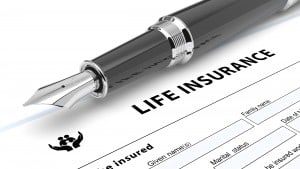How Much Does Life Insurance Really Cost?
Every year when summer winds down and families work hard to get the kids back in school and back to their normal routines. This seasonal transition is the perfect time to consider whether or not you have enough life insurance protection for your family. This is part of the reason why September has been designated as Life Insurance Awareness Month (LIAM) for the 12th straight year. 
Life Insurance Awareness Month (LIAM) is organized by lifehappens.org, and it is an effort to raise awareness about the growing crisis of underinsurance particularly among middle class Americans. According to a recent study, more than 40% of Americans have no life insurance at all; and of those that are insured, a large number of them have less insurance than they would need to cope financially if the primary breadwinner was no longer around.
The Great Misconception: While roughly a third of Americans believe they need more life insurance than they have now and 43% say they would suffer financially within six months if something happened to the primary household earner, the majority of those surveyed say it is unlikely they will purchase life insurance within the next 12 months. The main reason cited by most for not purchasing life insurance is cost. The challenge is that most Americans believe life insurance is significantly more expensive than it really is.
For example, in this survey, members of Generation X overestimated the cost of life insurance by 119%, while Millennials overestimated the cost by an astounding 213%! One of the major purposes of Life Insurance Awareness Month is to shed light on the fact that life insurance rates (particularly for term life) are far lower than most people believe.
What is Driving the Drop in Life Insurance Rates: Life insurance rates, as with the rates of any other insurance product, are largely driven by the amount of money insurers pay out in claims to policyholders. In recent years, medical breakthroughs have led to cures and effective treatments for countless health conditions that were previously incurable. Fewer fatal health conditions means longer average lifespans, fewer deaths, fewer claims paid out, and consequently lower insurance rates. And because term insurance has a designated time period (typically ranging from five to 20 years), more policies expire without the insurance company having to pay out a claim.
What this means to the average American is affordable life insurance rates, even if you are not in perfect health. For example, a 40 year old male non-smoker can often get $250,000 in term life insurance for less than $50 a month. Smokers can expect to pay about twice that amount and if you have any serious health conditions, this of course would increase the rate. The bottom line is a decent amount of life insurance protection can often be had for only around $1 to $5 a day; worst case, that’s about the cost of a cup of coffee at Starbucks.
Shop Around for the Best Rates: Life insurance rates can vary widely depending on the insurer and which segment of the market they specialize in. There are numerous websites online where you can enter your information and receive callbacks from several agents with different quotes. A better approach is to speak with an independent life insurance agent who has access to several of the top life insurance companies in your state. An independent broker can do the shopping for you – based on your unique circumstances – and come up with the best policy to fit your needs and budget.




